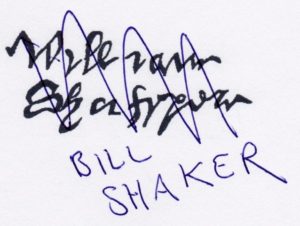02 June 2016
The Play’s The Thing – But What Is It?
Will simplification of Shakespeare work at The Globe?
By Chin Chin
 Splutterings across luvviedom have greeted the appointment of Emma Rice as the new artistic director of the Globe Theatre. That isn’t because of her plan to swap the genders of Shakespeare’s characters. After all, anyone who saw Fiona Shaw as Richard II will tell you that cross-gender casting can work well. Nor is it her proposal to encourage directors to make cuts. There is nothing new in that, either. Film versions of the plays almost always require substantial omissions; if moody long-range shots are to be added, something has to go to stop the film becoming impossibly long. Nor are stage versions exempt from cuts. The three Henry VI plays were coalesced into two in the Edward Hall production Rose Rage and that inevitably meant leaving out quite a lot. Some liked it, others did not; but we all lived with it and the production was a success. No, what makes people nervous is Ms Rice’s admission that attempts to read the plays left her “very sleepy” and tempted to switch on The Archers; also her idea of leading the charge against archaic language.
Splutterings across luvviedom have greeted the appointment of Emma Rice as the new artistic director of the Globe Theatre. That isn’t because of her plan to swap the genders of Shakespeare’s characters. After all, anyone who saw Fiona Shaw as Richard II will tell you that cross-gender casting can work well. Nor is it her proposal to encourage directors to make cuts. There is nothing new in that, either. Film versions of the plays almost always require substantial omissions; if moody long-range shots are to be added, something has to go to stop the film becoming impossibly long. Nor are stage versions exempt from cuts. The three Henry VI plays were coalesced into two in the Edward Hall production Rose Rage and that inevitably meant leaving out quite a lot. Some liked it, others did not; but we all lived with it and the production was a success. No, what makes people nervous is Ms Rice’s admission that attempts to read the plays left her “very sleepy” and tempted to switch on The Archers; also her idea of leading the charge against archaic language.
There is nothing sacred about Shakespeare’s words. The copyright has long expired and directors are free to adapt them in any way which they think will please their audiences. The real question is different. How much do you lose by altering the words? If the essence of Shakespeare is a felicitous combination of plot and language, then the rules of mathematics dictate that all you are left with is plot if you remove the language.
That itself can form the basis of success. The musical West Side Story adapted the plot of Romeo and Juliet but set the story in a modern context. As Elizabethan English is not much used in gangland America, that had to go too. Also Shakespeare is popular in many countries outside the UK. Watch Hamlet in Japanese, as I believe that many in Japan do, and you will hear Shakespeare’s plot, and indeed his imagery, unfolding to the words of a Japanese translator. The 1964 film of Hamlet directed by Grigori Kosintsev achieved considerable popularity with English audiences. It was moody and much shorter than the play. More to the point it was in Russian (with subtitles) and the language was not Shakespeare’s but Boris Pasternak’s. What was left of the original? Why, the plot and some imagery, of course.
They still called it Shakespeare. A good translation inevitably uses the words of the translator but convention usually requires that the attribution to the original author remains dominant. Take the following lines from the Rubáiyát of Omar Khayyám:
“The Moving Finger writes; and, having writ,
Moves on: nor all thy Piety nor Wit
Shall lure it back to cancel half a Line,
Nor all thy Tears wash out a Word of it.”
Are those the words of a twelfth century mathematician, poet, philosopher and astronomer who spoke no English? No, of course they’re not. The ideas and imagery may be those of Khayyám but the elegant verse is that of the translator, Edward Fitzgerald. You may claim to have read Homer’s Iliad, but, unless you are a classical scholar, the words you will actually have read will be those of the translator, Alexander Pope perhaps, or Christopher Logue, or the American scholar Robert Fagles.

With all this going on, how can anyone object to Ms Rice’s intention to adapt Shakespeare to make it more accessible? There is a difference, of course, between plays written in foreign languages and those written in English. With the Greek plays, for example, there is no choice but to translate and that has developed into a tradition of directors rewriting the plays into modern settings. It is often very successful, although the audiences who go off to dinner congratulating themselves on their appreciation of Aeschylus might sometimes be more realistic if they said that they had just enjoyed a play based on one of his stories. With Shakespeare, however, adapting means deliberately choosing to throw things into the bin. If you shorten the play, you reject certain scenes. If you change the language, then you lose his verse. It may be that you replace it with better verse, of course, but the standard is rather a high one.
One can have sympathy with Ms Rice when she says that she finds some of Shakespeare’s language hard to understand. It certainly can be, although whether it is or is not often depends upon the actor whose job it is to speak the lines. When Simon Russell Beale took the role of Hamlet, the extraordinary perceptive way in which he delivered the verse revealed aspects of the play which I had never previously appreciated. With lesser actors it can all come out rather confusingly.
It will be interesting to see how much Ms Rice loses through her approach of simplification and how much she gains. There is one risk, however, which she will need to keep in mind. The language of Shakespeare can certainly make the plays harder work than contemporary drama but the assumption that this will put audiences off them is a bold one. People like to be challenged and find it patronising when things are made too easy for them. Young people who have never seen a play by the Bard before will go expecting to have to work for their enjoyment. A little cutting and a little simplification may help them. A Reader’s Digest Shakespeare using the plots but not the language will simply come across as second rate. It is a fine balance but Ms Rice must be careful not to underestimate the intelligence of the audiences she seeks to attract.
If you enjoyed this article please share it using the buttons above.
Please click here if you would like a weekly email on publication of the Shaw Sheet

